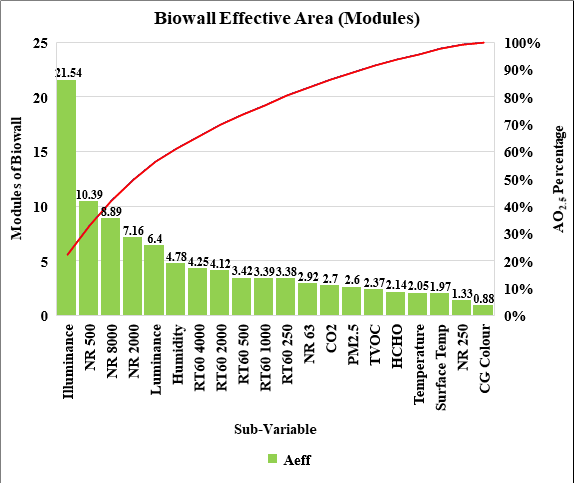
Biowalls are a new phenomenon in interior urban areas, which has proven to contribute positively to sensory comfort. But people use biowalls in different dimensions. Based on field facts, determining the biowall dimensions for human sensory comfort has not emphasized clear principles. The research aims to obtain the effective area of a biowall inducing sensory comfort comprehensively and simultaneously in tropical landed dwellings. Therefore, this study used the experimental method to extract the effective areas of the biowall to generate thermal, audial, visual, and respiratory comfort. The analysis was mathematically conducted through polynomial quadratic equations and directly or inversely proportional to the overall value regarding a generalization attempt. The variables measured included temperature, humidity, surface temperature, reverberation time, noise reduction, illuminance, luminance, and colour mapping, as well as levels of CO2, TVOC, HCHO, and PM2.5. The result showed that biowall effective area inducing thermal, audial, visual, and respiratory comfort for a (3000 x 3000 x 2500) mm3 room was 2.5 modules or 12.5 m2 leaf area. This value was able to provide an increase in the sensory comfort level for the thermal, audial, visual, and respiratory variables by 59.22 %, 76.64 %, 32.35 %, and 98.88 %, respectively.
Total file downloads: 7